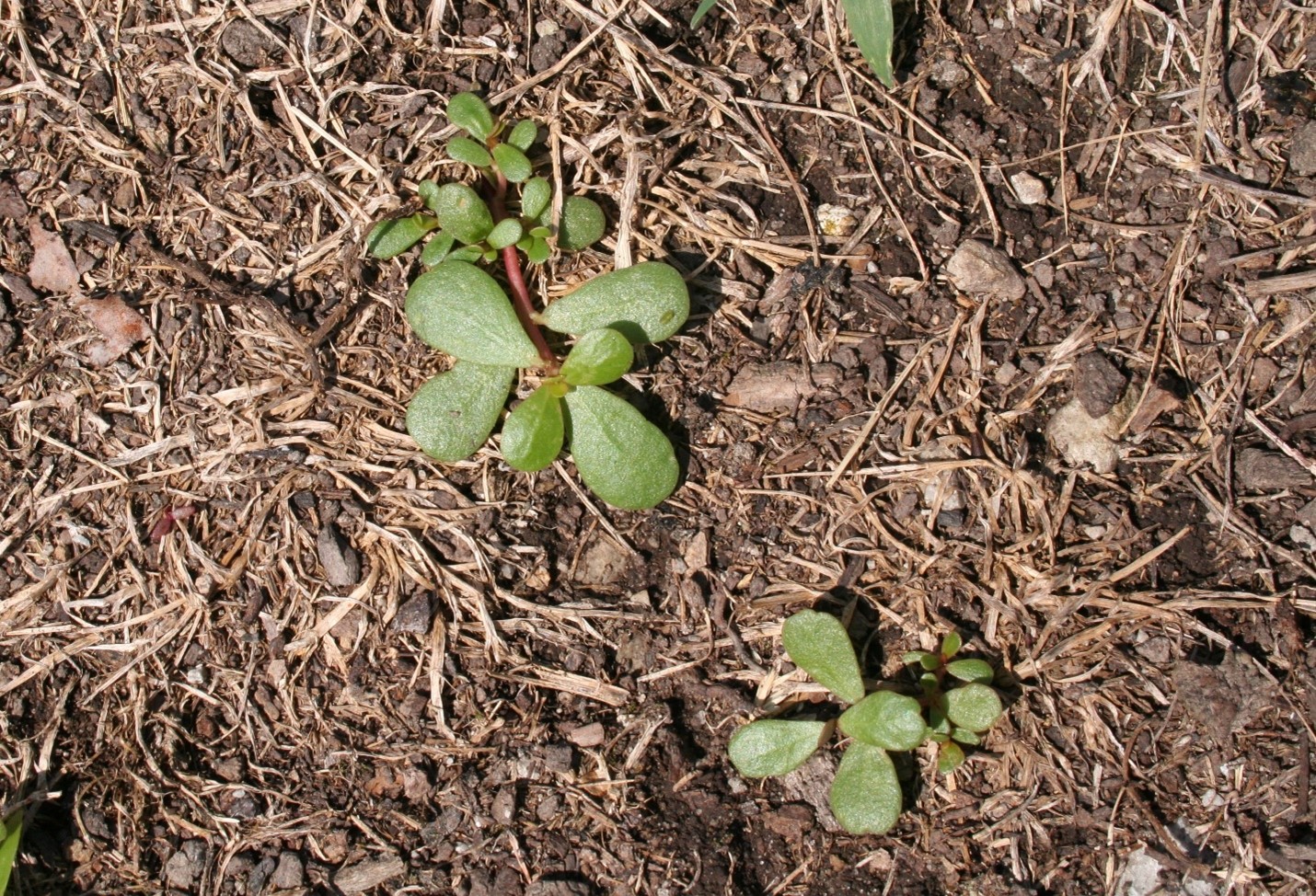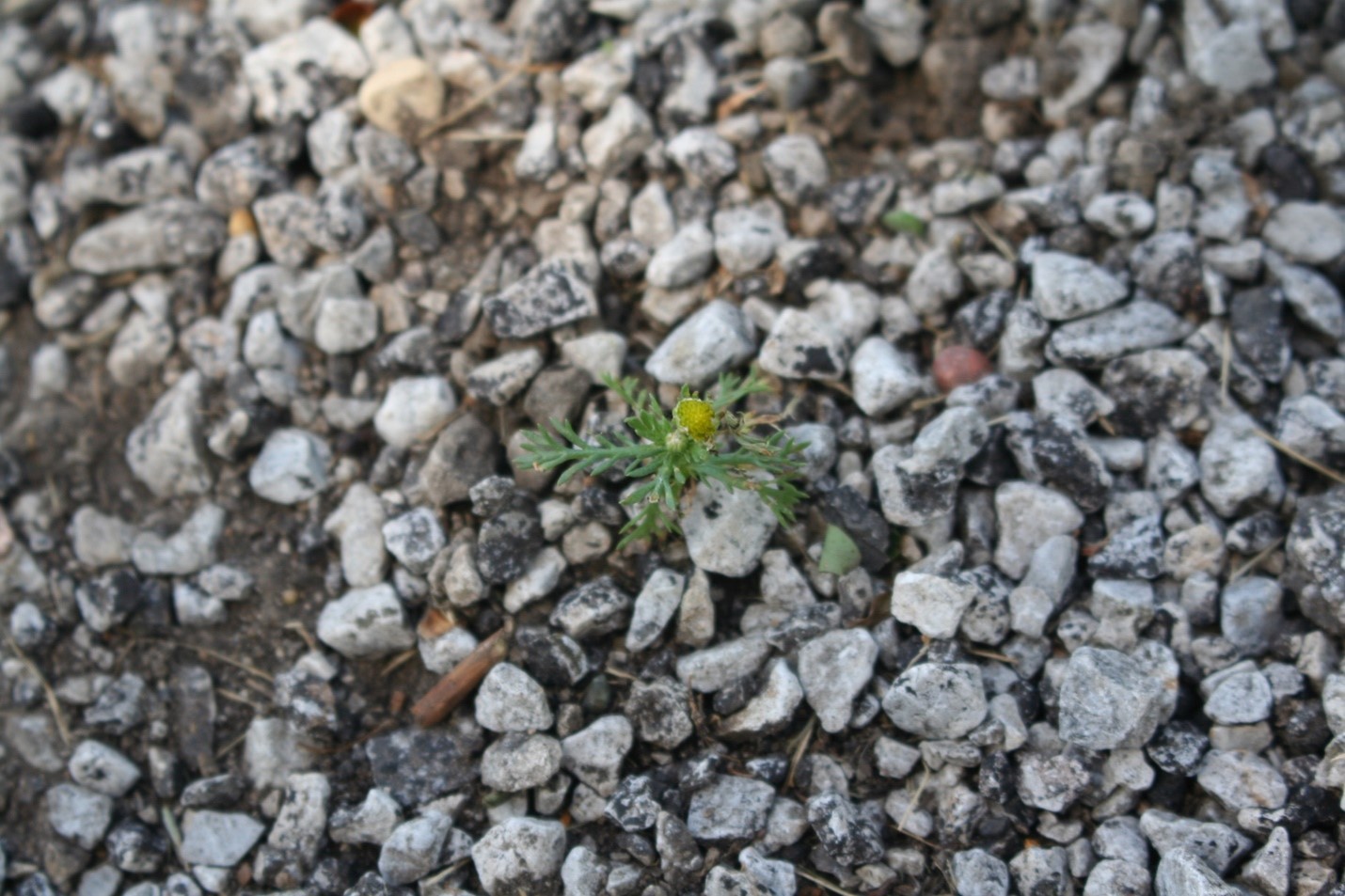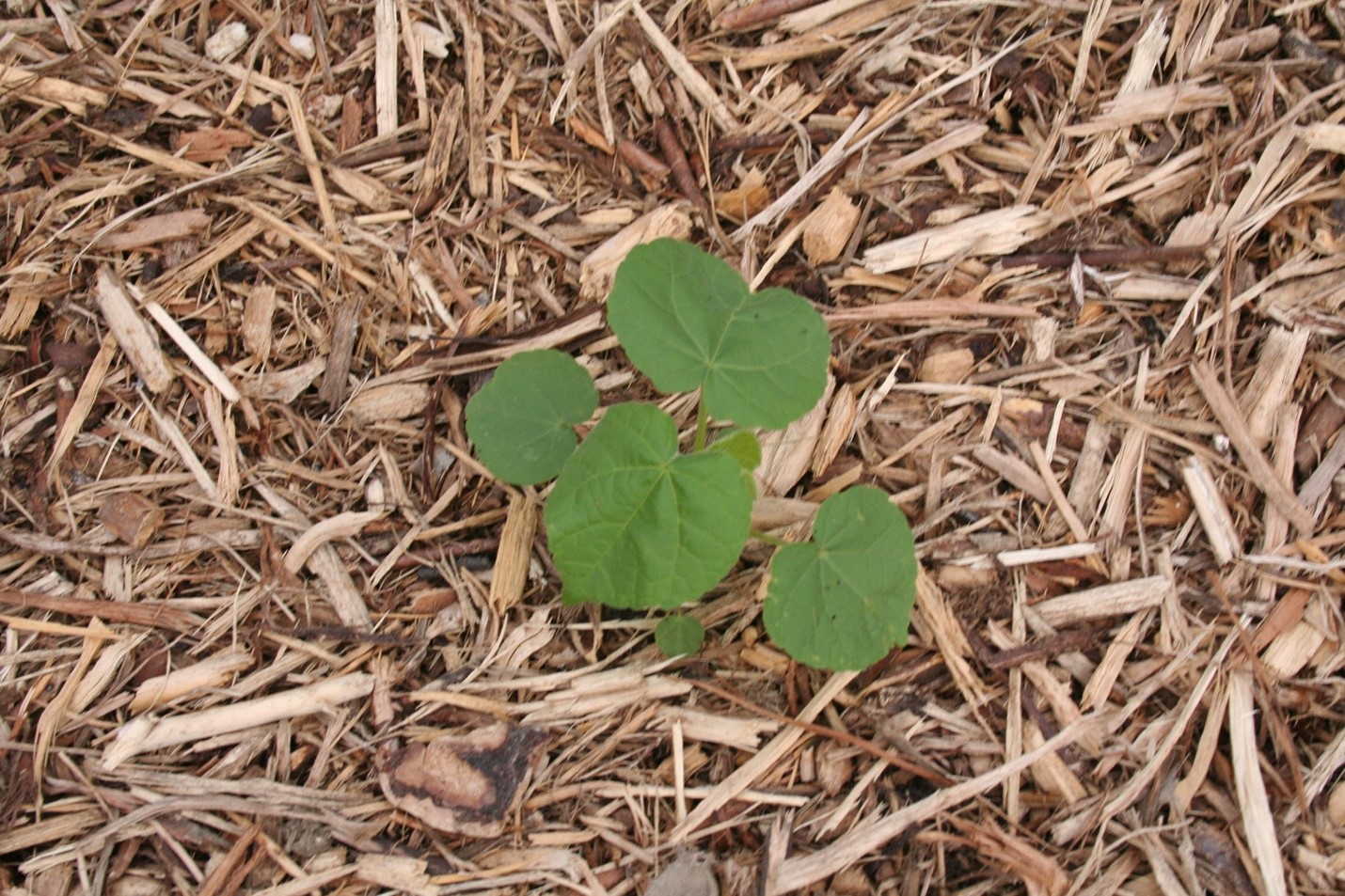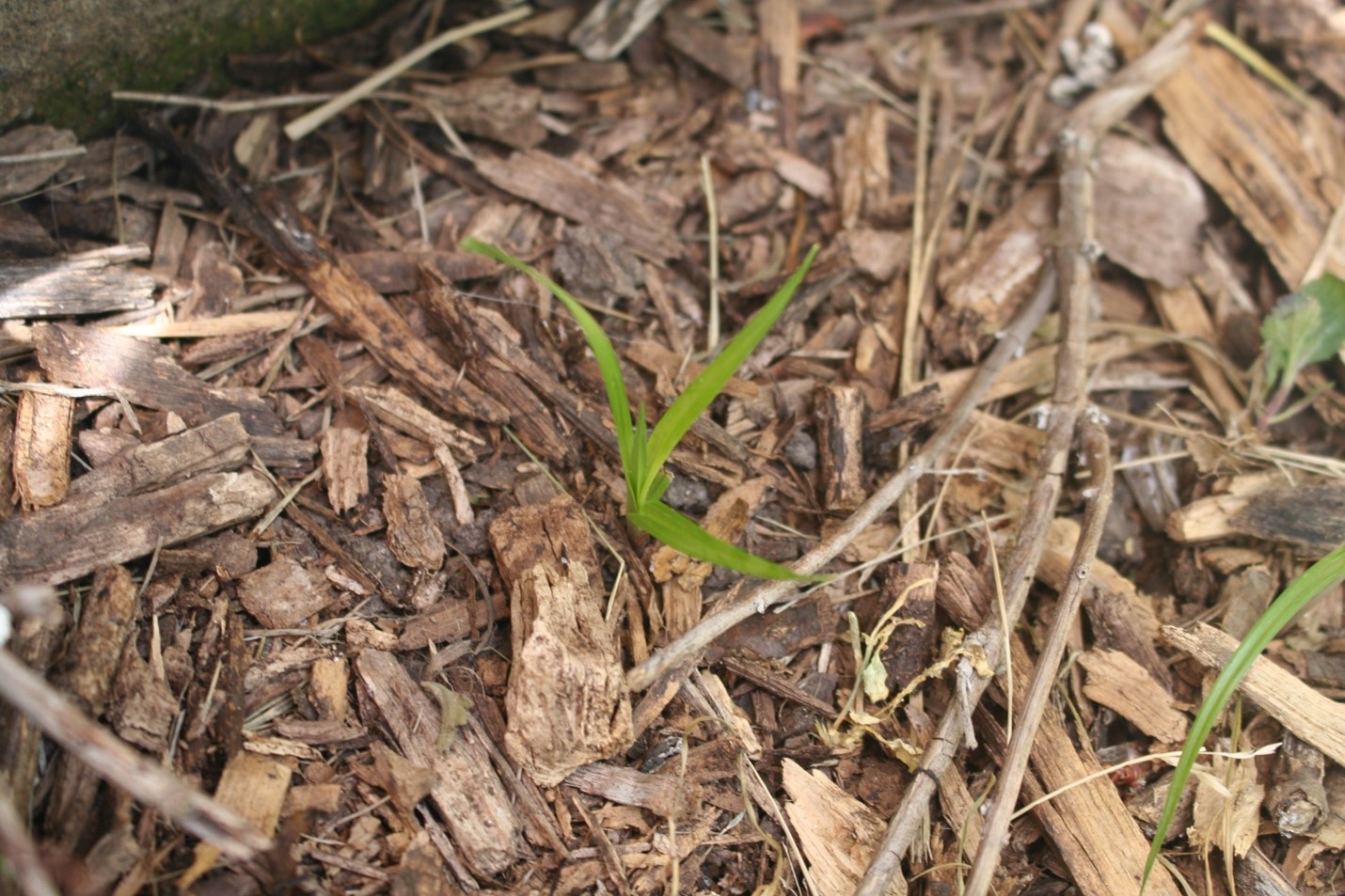Issue 4, June 8, 2022
A Few More Weed Seedlings Recently Found in Central Illinois
In the last issue of the Home, Yard, and Garden Newsletter, I wrote about 12 weed species that have recently germinated and can be widely found right now in central Illinois. Two weeks have passed and we have experienced some warmer temperatures and rainfall – both of which are needed for germination of you guessed it, MORE and DIFFERENT weeds! Here I present to you 5 more species that can be found making their way above ground if they aren’t there already.
Common purslane (Portulaca oleracea) – is a prostrate, summer annual that typically germinates late spring/early summer. The leaves and stems are reddish in color, thick, and succulent (juicy even). The leaves are wedge-shaped and rounded at the tips. The roots are fibrous and easily removed from the ground by pulling. The flowers are small and yellow with 5 petals, appearing July to September. This weed can easily handle dry conditions and stem fragments can produce new roots. Avoid cultivation. Some don’t consider common purslane to be a weed at all as it is edible and sometimes grown for that reason.

Common purslane, Michelle Wiesbrook, University of Illinois.
Pineapple weed (Matricaria matricarioides) – is a low growing, bushy, summer or winter annual. The rosettes can stay green year around. The leaves are smooth and finely divided making it fine in texture. When crushed, the leaves have a sweet odor like pineapple. Its shallow taproot allows it to be pulled easily. The flowers are rounded and greenish yellow, appearing May through September.

Pineapple weed, Michelle Wiesbrook, University of Illinois.
Spotted spurge (Chamaesyce maculate or Euphorbia maculata) – is a mat-forming, warm-season annual that reproduces by seed. It has a shallow taproot and pulls easily from the soil. It thrives in dry, sandy sites. Spurges have milky sap that exudes when they are injured. The leaves are small, opposite, oval, and sometimes purple-spotted and/or hairy. The flowers are very small and present July to September in the axils of the upper leaves. Prostrate spurge is very similar and considered by some taxonomists to be the same species.

Spotted or prostrate spurge, Michelle Wiesbrook, University of Illinois.
Velvetleaf (Abutilon theophrasti) – is an erect, usually unbranched, summer annual with a shallow, branching taproot. The leaves are alternate on the stem, large, and heart shaped. Both the stems and leaves are velvety soft to the touch and densely hairy. They emit an unpleasant odor when rubbed. The flowers have 5 yellow petals. The seed pod is characteristic in shape and resembles the fluted edge of a pie crust. In fact, dried seed pods have been used to imprint a pretty design into the top of butter, giving this weed the nickname of Butterprint. While this plant has an interesting appearance, allowing it to develop seeds is a mistake as seeds remain viable in the soil for over 50 years.

Velvetleaf, Michelle Wiesbrook, University of Illinois.
Yellow nutsedge (Cyperus esculentus) – is an erect, grass-like warm-season perennial sedge. Leaves are yellow-green in color, waxy, and with a strong midrib fold. The stems are triangular rather than round or rounded as with grasses. It spreads primarily by underground rhizomes and tubers (nutlets), but can spread by seed too. The inflorescence is large and branched. Dormant tubers may remain viable for 10 or more years. This weed is often found on moist, poorly drained sites.

Yellow nutsedge, Michelle Wiesbrook, University of Illinois.
For assistance with identification, consult with your local University of Illinois Extension office or the booklet, “Identifying Weeds in Midwestern Turf and Landscapes” available at: https://pubsplus.illinois.edu/products/identifying-weeds-in-midwestern-turf-and-landscapes. You may also submit plant samples to our Plant Clinic located in Urbana. Please see http://web.extension.illinois.edu/plantclinic/ for more information.
Author:
Michelle Wiesbrook